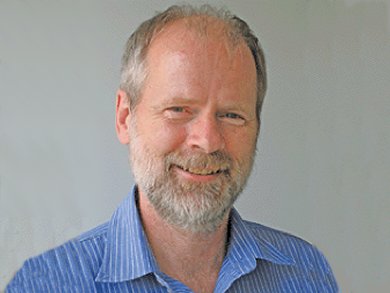Professor Huw Davies, Emory University, Atlanta, USA, has won the EROS Best Reagent Award 2013 for the development of methyl (E)-4-phenyl-2-diazo-3-butenoate. The award was created by Aldrich® Chemistry and John Wiley & Sons to honor the work of the authors of the online edition of Encyclopedia of Reagents for Organic Synthesis (e-EROS). Every year, 200–300 synthetic chemists contribute articles to e-EROS to keep the collection up-to-date and a key source of information for chemists at the bench. The Editorial Boards select their favorite reagents from among these articles and the resulting shortlist is then voted on by the Award Committee. Professor Davis receives $10,000 for winning this year’s award. He will present a plenary lecture during the OMCOS (Organometallic Chemistry Directed Towards Organic Synthesis) Symposium at Fort Collins, Colorado, USA, on July 29, 2013.
The 2013 Reagent: Methyl (E)-4-phenyl-2-diazo-3-butenoate (CAS: 119987-21-2)
Methyl (E)-4-phenyl-2-diazo-3-butenoate is widely used as a carbenoid precursor for cyclopropanations, as a reagent in C–H insertion reactions, in reactions involving ylides, in C–H activation reactions, in tandem C–H activation/Cope rearrangements (CH/Cope), and other related transformations. The article on the award-winning reagent by the Huw Davies Research Group was published in EROS in March 2011.
Huw Davies received his B.Sc. degree from University College Cardiff, Wales, UK, in 1977. He completed his Ph.D. at the University of East Anglia, UK, in 1980. After a post-doctoral position at Princeton University, USA, he joined the faculty at Wake Forest University, North Carolina, USA. In 1995 he moved to the University at Buffalo, the State University of New York, USA, where he held the positions of UB Distinguished Professor and Larkin Professor of Organic Chemistry. In 2008, he joined the faculty at Emory University as the Asa Griggs Candler Professor of Chemistry.
Davies’ research is based on the development of new enantioselective synthetic methods. His work includes the design of chiral catalysts, development of new synthetic methodology, total synthesis of biologically active natural products, and development of chiral therapeutic agents. A major current theme is catalytic asymmetric C–H activation by means of rhodium-carbenoid induced C–H insertion.
- Methyl (E)-4-phenyl-2-diazo-3-butenoate,
Etienne Nadeau, Huw M. L. Davies,
In Encyclopedia of Reagents for Organic Synthesis, John Wiley & Sons, New York, USA, 2011.
DOI: 10.1002/047084289X.rn01317
Selected publications by Huw Davies:
- Alkynoate Synthesis through the Vinylogous Reactivity of Rhodium(II) Carbenoids,
Damien Valette, Yajing Lian, John P. Haydek, Kenneth I. Hardcastle, Huw M. L. Davies,
Angew. Chem. Int. Ed. 2012, 51(34), 8636–8639.
DOI: 10.1002/anie.201204047 - Computationally Guided Stereocontrol of the Combined C–H Functionalization/Cope Rearrangement,
Yajing Lian, Kenneth I. Hardcastle, Huw M. L. Davies,
Angew. Chem. Int. Ed. 2011, 50(40), 9370–9373.
DOI: 10.1002/anie.201103568 - On the Mechanism and Selectivity of the Combined C−H Activation/Cope Rearrangement,
Jørn H. Hansen, Timothy M. Gregg, Stephanie R. Ovalles, Yajing Lian, Jochen Autschbach, Huw M. L. Davies,
J. Am. Chem. Soc. 2011, 133(13), 5076–5085.
DOI: 10.1021/ja111408v
Also of interest:
- Webinar: EROS Lecture 2012
The EROS Best Reagent Award Lecture by Bruce H. Lipshutz, University of California, Santa Barbara USA, broadcast free-to-view over the internet — attend at your computer any time you want - EROS Best Reagent Award 2011
Paul Knochel has won the EROS Best Reagent Award 2011 for the development of Turbo-Grignard™
See a list of all awards Wiley is involved in




